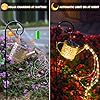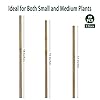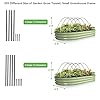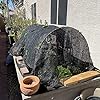:max_bytes(150000):strip_icc()/GettyImages-2156008703-04ac6b8bc0b64c9ca101d9e39670b596.jpg)
When fall finally arrives in the South, cool-season lawns breathe a sigh of relief. Fescue, Kentucky bluegrass, and ryegrass all green up and start actively growing again as temperatures drop to a more moderate 60 or 70 degrees. This when we really notice how well a cool-season lawn fared—or didn't—after a long, hot summer. Now is the time to step in and weed, dethatch, lime, fertilize, aerate, and reseed bare patches in cool-season lawns.
If you have never aerated your lawn, you may have noticed other neighbors doing so (or wondered about the plugs of soil lying all over their grass). Aerating creates holes in the soil so that water and air can penetrate into a lawn's rootzone. To find out why it's so important to aerate in fall, we talked to lawn-care expert Grady L. Miller, PhD, a professor and Extension Turfgrass Specialist at North Carolina State University in Raleigh. He explains why aerating cool-season lawns in fall will give you a healthier yard by spring.
Grady L. Miller, PhD is an ENVU Distinguished Professor of Sustainability and Extension Turfgrass Specialist in the Crop and Soil Sciences Department at North Carolina State University in Raleigh.
Here's a general rule of thumb to remember: Lawns should be aerated when the grass is actively growing. In the South, warm-season grasses like Bahia, Bermuda, and St. Augustine are aerated in summer. But you should wait with cool-season grasses, which often go dormant in the summer months while they are under stress from the heat.
"We normally recommend fall because that's a common time for renovation of cool-season grasses," Miller explains. "In this area of the U.S., we don’t recommend spring seeding. Our challenge is to get the immature plant mature enough to get through summer."


















![[High Quality] - The Bamboo stakes are made of high quality natural bamboo.It’s very strong and durable,great for plant support!Each stakes is inspected manually to ensure quality. [Multipurpose Use] - Perfect for indoor and outdoor plants.It's great...](https://m.media-amazon.com/images/I/51zEDOHJvML._SL160_.jpg)














